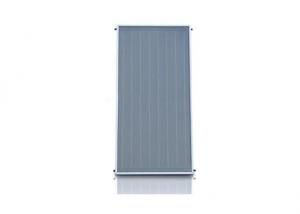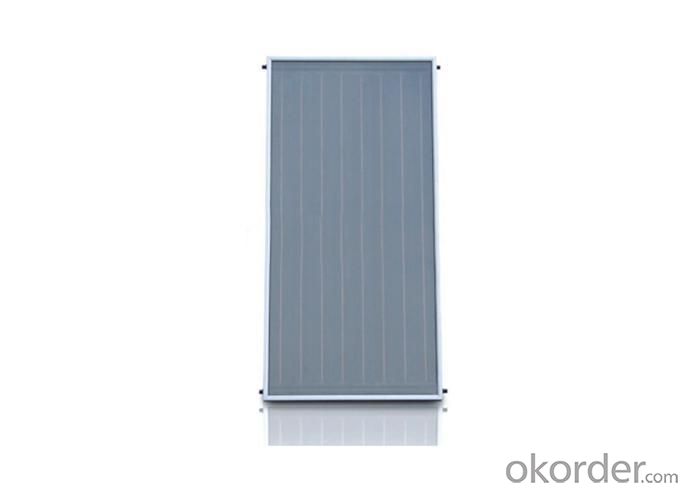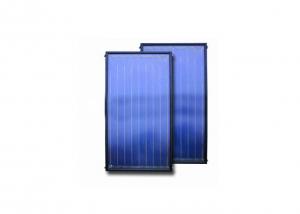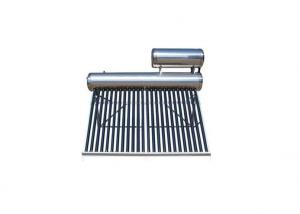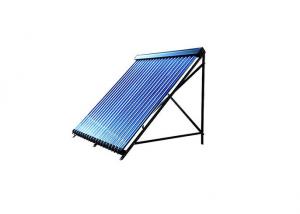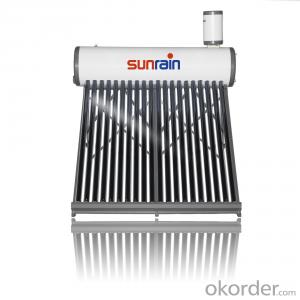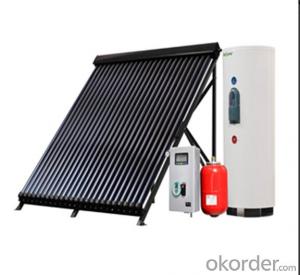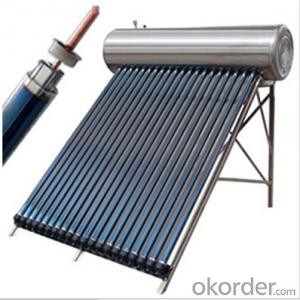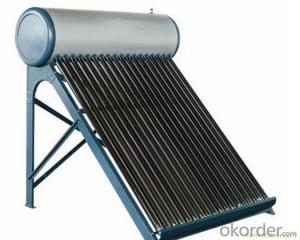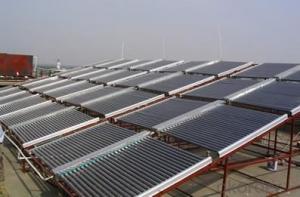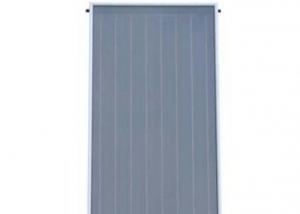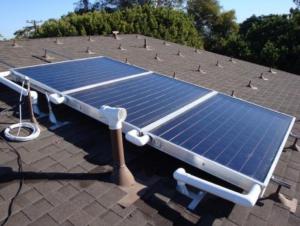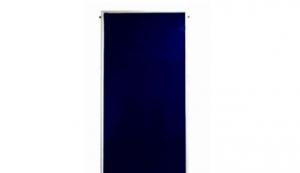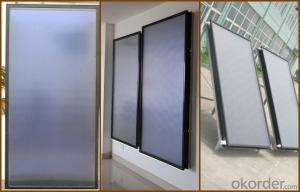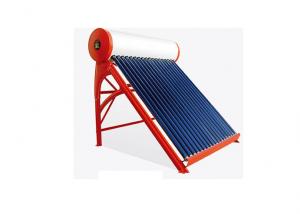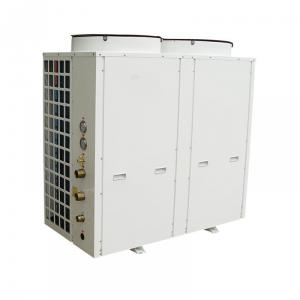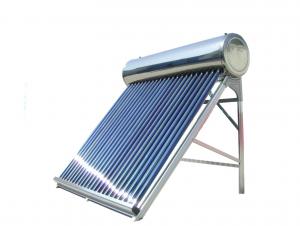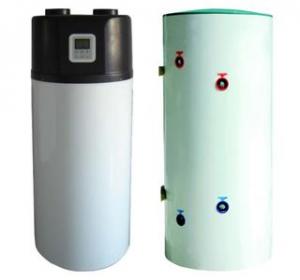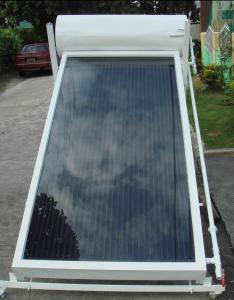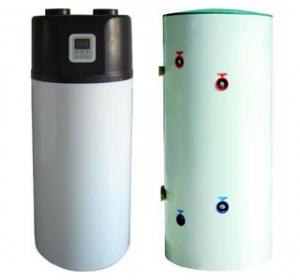Best Solar Water Heater - Solar Keymark High Quality Flat Plate Collector
- Loading Port:
- China Main Port
- Payment Terms:
- TT or LC
- Min Order Qty:
- 1 Piece pc
- Supply Capability:
- 2500 Pieces per Month pc/month
OKorder Service Pledge
OKorder Financial Service
You Might Also Like
CE, ISO9001-2000 and CCC ,SOLAR KEYMARK certification
1.Copper and Aluminum unfied core , Header pipe diameter up to 25mm .
2.The coating is selectivity absorb coat
3.Tempered glass with 5mm thickness.
4.Working pressure: ≤ 0.6Mpa
5.Aluminum Alloy Profile: Electrophretic aluminum alloy profile treatment.
6.Special Heat Preservation: Less heat loss, more efficiency and more beautiful.
7.Packing: carton
8.Copper and Aluminum unfied core , Header pipe diameter up to 25mm .
9.Special Heat Preservation: Less file: Electrophretic aluminum alloy profile treatment. flat collectorheat loss, more efficiency and more beautiful
- Q: Can a solar water heater be integrated with an existing plumbing system?
- Certainly, it is entirely possible to incorporate a solar water heater into an already established plumbing system. In actuality, it is quite customary to retrofit solar water heaters into existing plumbing systems. The process of integration typically entails joining the solar water heater to the preexisting hot water line. This can be accomplished by incorporating a heat exchanger or a pre-heat tank that facilitates the flow of solar-heated water, allowing it to combine with the existing hot water supply. Furthermore, it is possible to install a backup heating system, such as a gas or electric water heater, in order to ensure a supply of hot water during periods of limited availability of solar energy. All in all, integrating a solar water heater with an existing plumbing system is a practical and efficient means of harnessing the sun's energy and reducing dependence on traditional water heating methods.
- Q: Can a solar water heater be installed in an existing building?
- Yes, a solar water heater can be installed in an existing building. The installation process may require some modifications to the existing plumbing system and roof structure, but it is certainly possible to retrofit a solar water heater into an existing building.
- Q: Solar water heater can be installed with pressure pump, how to add, how much? Easy to use?
- 3, the power supply line of the booster pump is connected with the signal relay contact.4, start the water heater, the pressure pump is activated
- Q: Rural household solar water heater using well water, water pump with a bucket, bucket of water to the solar water heater, the bucket position is lower than the position of the solar water heater, solar water heater can not be able to Sheung Shui? How Sheung Shui?
- Buckets of water must be able to automatically flow into the solar water heater.If your water heater is equipped with a water tank, the outlet position of the bucket should be higher than that of the water heater.If the tank is your bucket and water heater, a lower portion of a water pipe connected with the water heater beneath another pipe from the bucket with a slightly higher position above the water heater, after a pipe barrel interface should be higher than the head of the water heater interface.
- Q: Solar energy inside the house was old sin, the bottom of my heart despise this product. Two years to repair three, but have to use ah, see the winter, the electric heating rod is broken, then the agent of the solar energy has long been closed to run, and call to other home, said to be more than and 300. I look at the Internet, it will be able to buy 30-50 yuan. So I want to repair. But up to the roof dumbfounded, electric rods will not be demolished. Who help, tell how to dismantle the electric heating rod. I promise I won't be able to buy a solar water heater in the future! Mmm ~ ~
- There are two kinds of electric heating rods, like we use incandescent bulbs, a bayonet, a kind of silk mouth, first look at what kind of home,
- Q: Can a solar water heater be used in areas with limited oil availability?
- In areas with limited oil availability, a solar water heater proves to be a viable option. Unlike traditional water heaters that rely on oil or other fossil fuels, solar water heaters primarily utilize the sun's energy. As a result, they serve as an excellent alternative in regions where oil availability is constrained or unpredictable. These water heaters are specifically designed to capture and convert sunlight into heat, which is then used to warm the water stored within the system. This design promotes sustainability and environmental friendliness, reducing reliance on oil and mitigating greenhouse gas emissions. Moreover, solar water heaters offer particular advantages in remote or off-grid locations where accessing oil may present challenges or incur high costs. By harnessing the abundant and free energy from the sun, these water heaters provide a dependable and efficient solution for heating water in areas with limited oil availability.
- Q: Can a solar water heater be used in areas with high levels of rainfall?
- Yes, a solar water heater can be used in areas with high levels of rainfall. The amount of rainfall does not affect the functionality of a solar water heater, as it primarily relies on the sun's energy to heat the water, rather than the surrounding weather conditions. Rainfall may temporarily reduce the efficiency of the solar panels by blocking sunlight, but the system will continue to work effectively once the rain stops.
- Q: How does a solar water heater contribute to reducing carbon emissions?
- A solar water heater contributes to reducing carbon emissions in several ways. Firstly, unlike traditional water heaters that rely on fossil fuels such as natural gas or coal, solar water heaters utilize the energy from the sun to heat water. This means they do not rely on non-renewable sources of energy and do not produce carbon dioxide emissions during operation. Secondly, solar water heaters are highly efficient in converting solar energy into heat. By harnessing the power of the sun, they can heat water to high temperatures without consuming any additional energy. This reduces the demand for electricity or gas-powered water heaters, which in turn leads to a decrease in carbon emissions associated with the production and use of these fossil fuels. Moreover, solar water heaters also have a longer lifespan compared to conventional water heaters. They require minimal maintenance and have fewer mechanical parts that can wear out or break down. This results in reduced manufacturing and disposal of water heater units, further reducing the carbon footprint associated with their production and end-of-life disposal. Additionally, the installation of solar water heaters can be incentivized through government programs or renewable energy subsidies. This encourages homeowners and businesses to adopt these environmentally friendly systems, leading to a greater adoption of solar water heaters and subsequently reducing carbon emissions on a larger scale. In summary, solar water heaters contribute to the reduction of carbon emissions by utilizing renewable energy from the sun, reducing the reliance on fossil fuels, improving energy efficiency, and promoting sustainable practices.
- Q: How does the versatility of a solar water heater compare to a traditional water heating system?
- The versatility of a solar water heater is significantly lower compared to a traditional water heating system. While solar water heaters are highly efficient in harnessing renewable energy from the sun to heat water, their functionality is limited to sunny days. Traditional water heating systems, on the other hand, can rely on various energy sources such as electricity, gas, or oil, allowing them to provide hot water consistently regardless of weather conditions.
- Q: Can a solar water heater be installed on a flat roof?
- Yes, a solar water heater can be installed on a flat roof. The flat roof provides a suitable surface for the installation of solar panels, which capture the sun's energy to heat the water. However, it is important to consult a professional to assess the structural integrity and suitability of the flat roof for installation before proceeding.
1. Manufacturer Overview
| Location | Zhejiang,China (Mainland) |
| Year Established | 2004 |
| Annual Output Value | US$10 Million - US$50 Million |
| Main Markets | North America; South America; Southeast Asia; Africa; Oceania; Mid East; Western Europe |
| Company Certifications | ISO 9001:2000 |
2. Manufacturer Certificates
| a) Certification Name | |
| Range | |
| Reference | |
| Validity Period |
3. Manufacturer Capability
| a) Trade Capacity | |
| Nearest Port | |
| Export Percentage | 61% - 70% |
| No.of Employees in Trade Department | |
| Language Spoken: | |
| b) Factory Information | |
| Factory Size: | 5,000-10,000 square meters |
| No. of Production Lines | 8 |
| Contract Manufacturing | OEM Service Offered |
| Product Price Range | |
Send your message to us
Best Solar Water Heater - Solar Keymark High Quality Flat Plate Collector
- Loading Port:
- China Main Port
- Payment Terms:
- TT or LC
- Min Order Qty:
- 1 Piece pc
- Supply Capability:
- 2500 Pieces per Month pc/month
OKorder Service Pledge
OKorder Financial Service
Similar products
Hot products
Hot Searches
Related keywords
